The following list highlights some of the best places to visiting in Jordan. So if you are in Jordan, I recommend visiting the following:
- Dead Sea, Israel and Jordan
- Petra, Arava Valley, Jordan
- Wadi Rum, Aqaba, Jordan
- The Baptismal Site of Jesus Christ, Juwafat al-Kafrayn, Jordan
- Jerash, Amman, Jordan
- Mujib Nature Reserve, Sweimeh, Jordan
- Dana Nature Reserve, Dana, Jordan
- Ajloun Castle, Ajloun, Jordan
- Shobak, Ma’an, Jordan
- Mount Nebo, Madaba, Jordan
- Umm Qais, Irbid, Jordan
- Arch of Hadrian, Jerash, Jordan
- Roman Theatre, Amman, Jordan
- Ma’in Hot Springs, Ma’in, Jordan
1. Dead Sea, Israel and Jordan
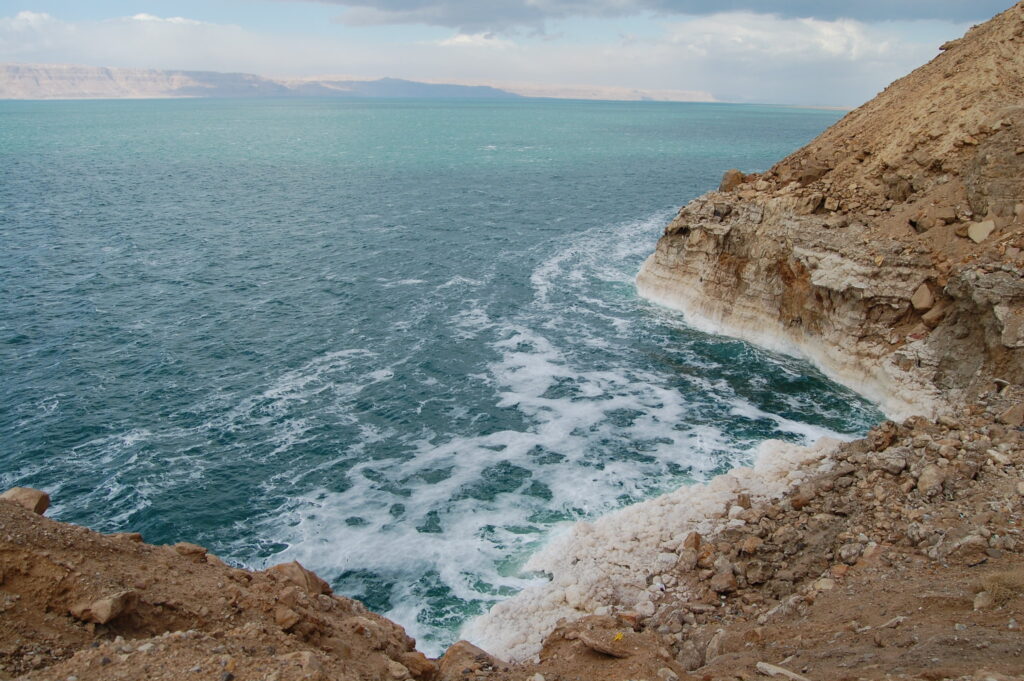
It is one of the most spectacular landscapes on the planet, as the salt crystals on its shores make it unique. Also known as the world’s largest spa, it is located 400 metres below sea level, is the lowest oxygenated point on earth, and is a destination for both religious and health and wellness tourism. And besides the bath, you can’t miss the ‘smearing’ in the mud of the Dead Sea, which will leave your skin soft, clean and super hydrated; you’ll have to bring a carafe of water to rinse off the salt as it crystallises on the skin and some people find it annoying.
2. Petra, Arava Valley
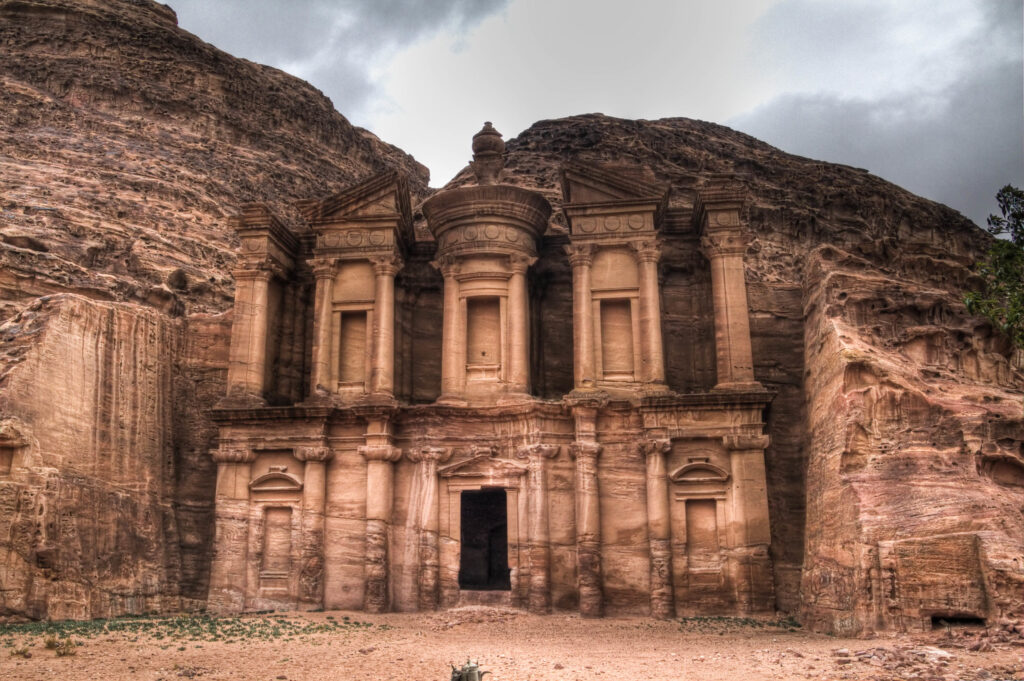
Petra is an ancient rock-hewn city of the Middle East. Also called ‘the pink city’ because of the unique colour of its mountainous belt, Petra is a rich archaeological ensemble from the time of the Nabataeans, combining eastern and western elements. Temples, tombs, tunnels, dams and canals combine with a unique red sandstone landscape. For all these reasons, it has been a UNESCO World Heritage Site since 1985, and has been on the list of the New Seven Wonders of the World since 2007. Arrive in this beautiful city of pale pink rock formations and earth tones and hire a tour guide who will take you along lesser-known paths or to corners from which you can see different parts of Petra and be enveloped by the magnificence of this ancient metropolis.
3. Wadi Rum, Aqaba

It is one of the most beautiful deserts in the world and a must-see in Jordan. Bedouins have passed through it for centuries with their camel caravans. It is also known as the ‘Valley of the Moon’ and was declared a UNESCO World Heritage Site in 2011. The protected desert area of Wadi Rum is also one of the best places in the world for stargazing. There is something for everyone to explore Wadi Rum. You can hire 4×4 vehicles with a driver/guide, you can hire a camel and a guide for a fixed duration or you can take a hot air balloon ride. Either way it is an unforgettable experience.
4. The Baptismal Site of Jesus Christ, Juwafat al-Kafrayn
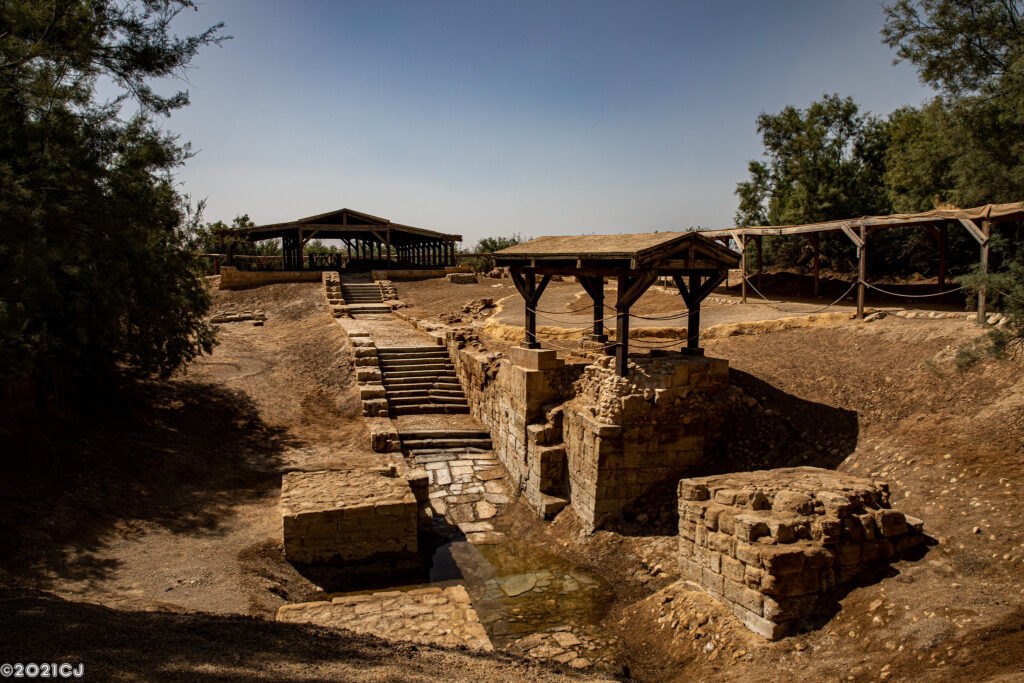
The site of the Baptism of Jesus occupies an area of 5.3 km2 in the Jordanian desert consisting of two distinct areas, the Tell al Kharrar also known as the Hill of Elijah or Jabal Mar Elias and another sector near the river about 2 km to the east called Zor where the ancient Church of John the Baptist is located, between which are distributed numerous sites of tourist interest both culturally and religiously. It is very important to know that it is NOT possible to visit the place where Jesus was baptised on your own. Due to the religious and frontier importance of the site, the area is controlled by the military. For this reason, we will have to park at the entrance of the site and visit it with a tour of the site.
5. Jerash, Amman
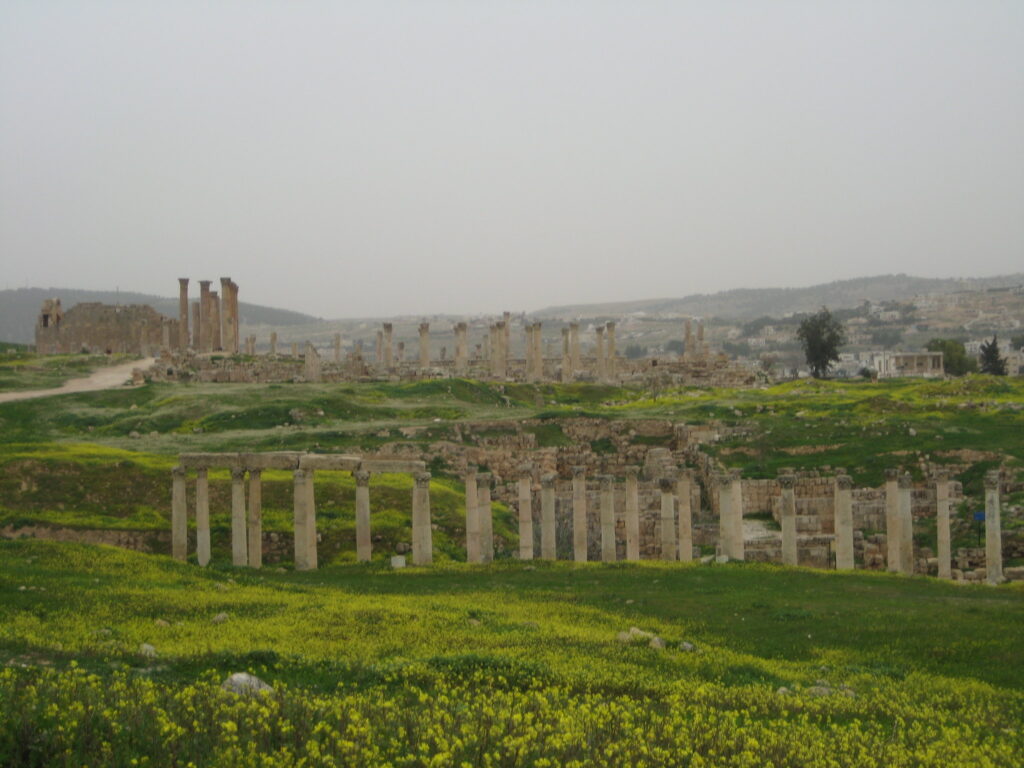
The site of Jerash is one of Jordan’s major tourist attractions. The size of the ancient city and the state of preservation make it an enriching experience. Its ruins are one of the best-preserved archaeological destinations in the Middle East. Among its innumerable columns you can glimpse the magnitude of its temples and the echo of its theatres. Must-see sites include Hadrian’s Arch, Hippodrome, Oval Square, Cardo Maximus, Nymphaeum, North Theatre, Temple of Artemis, Temple of Zeus and Maximus Theatre.
6. Mujib Nature Reserve, Sweimeh
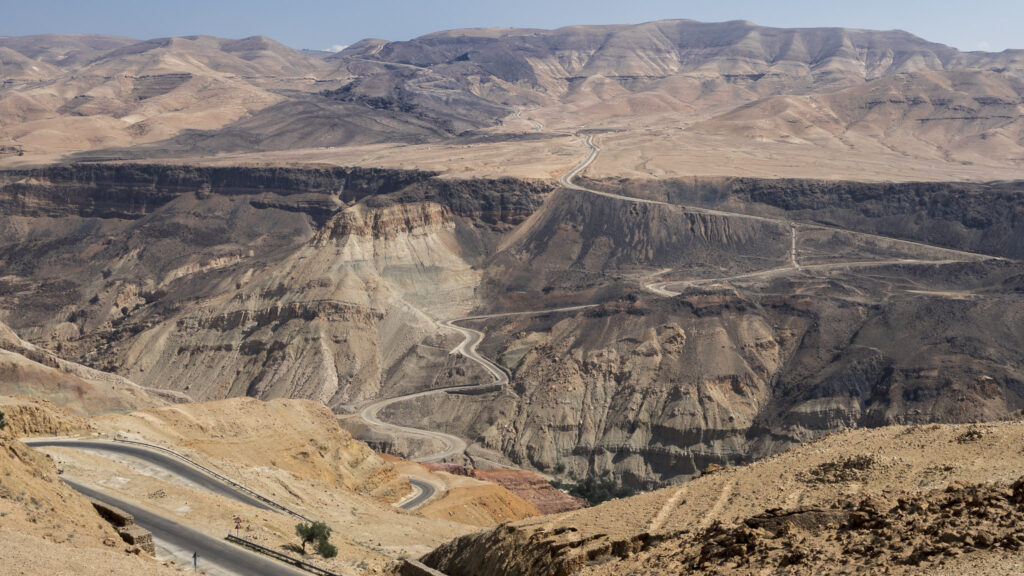
The Mujib Nature Reserve is the lowest altitude reserve in the world and has a wealth of breathtaking natural scenery on the shores of the Dead Sea. The entire nature reserve extends up to the Madba and Karak Mountains in the south and north. A good number of tourists come to the Mujib Reserve every year to tour a part of its desert, which is in some parts vegetated and in other parts more mountainous and rocky, with a landscape that is unique in the way it is cut by caves and cliffs. It is recommended to go in the vicinity to the hot springs of Hammamat Ma’in, which is all along the edge of this reserve. Wadi Mujib also offers a variety of hiking trails (the Ibex Trail), ecotourism, canyoning, trekking and abseiling.
7. Dana Nature Reserve, Dana
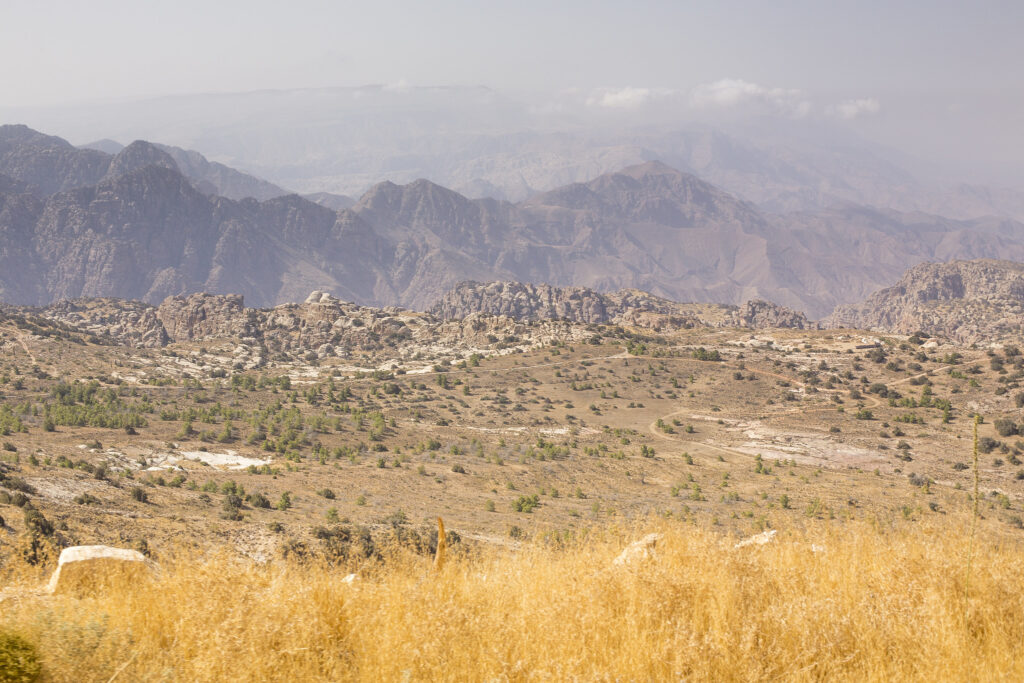
It is the largest nature reserve in all of Jordan at 320 square kilometres and is part of the Great Rift Valley. This area is ideal for hiking and enjoying the desert landscape and rock formations. So if you like hiking and nature. There are some circuits that do not require a guide service, but others do. Moreover, the experience of visiting with a local is much more enriching and it is easier to spot animals, as they know better their habits and where some of them tend to be. The best time to visit the Dana Reserve, and Jordan in general, is in autumn or spring, when temperatures are milder and more pleasant for walking.
8. Ajloun Castle, Ajloun
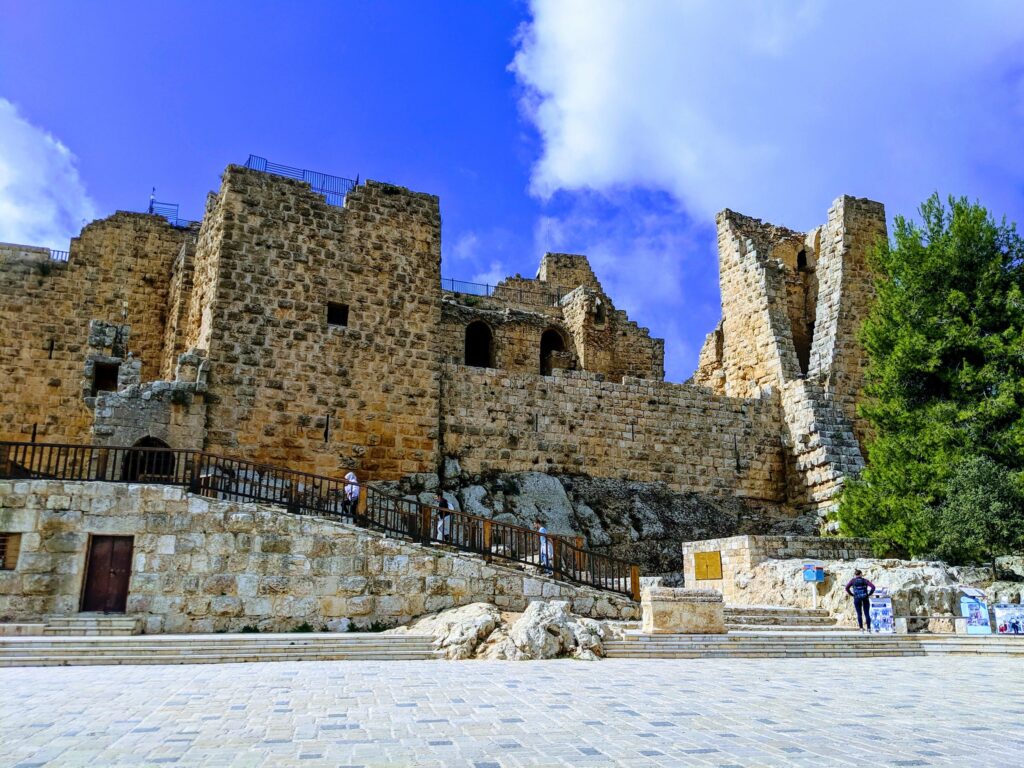
This castle controlled the main routes to the Jordan Valley and protected trade routes with its four towers, arrow slits in its walls and moat approximately 16 metres wide and 15 metres deep. The interior of the fortress today is in a most beautiful state of preservation, and you can take a pleasant walk for about an hour through its rooms and up to the battlements to get an idea of the views over the Jordan Valley and the Galilee Mountains. Nearby, the Ajloun Nature Reserve, 13 km² of enormous beauty and diversity of flora and fauna, has nature trails and bungalow-style accommodation.
9. Shobak, Ma’an

It is off the Jordanian tourist trail, yet it is only 25 kilometres from one of the world’s most popular tourist attractions, the city of Petra. Shobak Castle is in a dilapidated state. Nevertheless, some sections of the castle can be glimpsed quite clearly; several wells, the apse of two churches, a baptistery, alcoves, the prison, vaulted rooms with arches, a watchtower, the baths, the catacombs, some period inscriptions, and so on. What is really fascinating is the secret passageway hidden in the castle. This passage is a tunnel leading from Shobak Castle to the base of the mountain.
10. Mount Nebo, Madaba
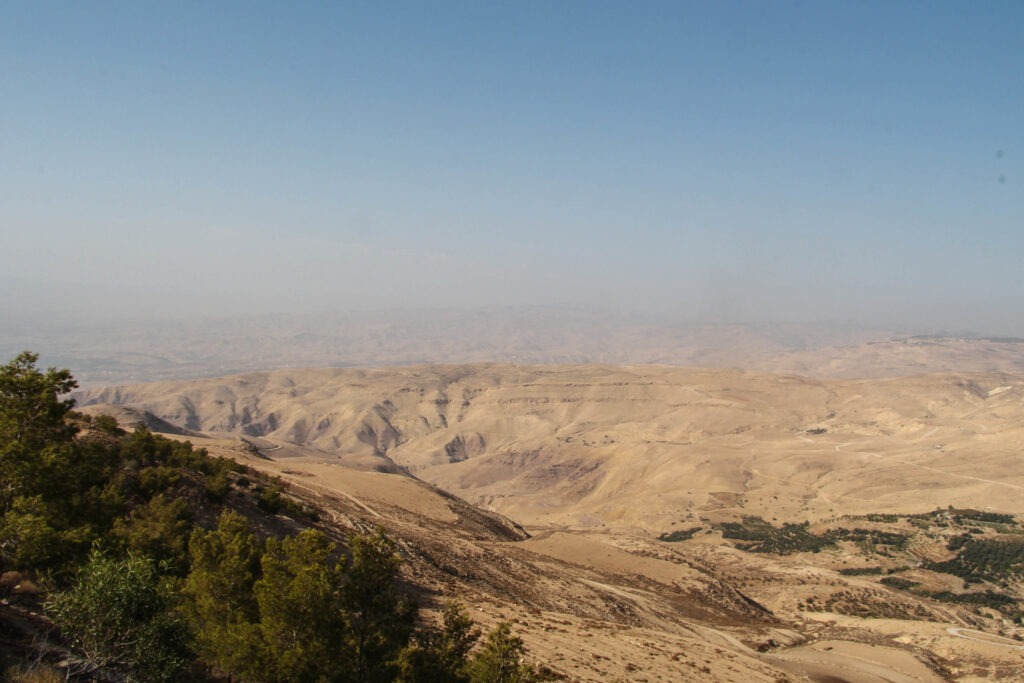
Mount Nebo is located about 10 kilometres northwest of the city of Madaba, and is no less than the mountain from which Moses caught a glimpse of the Promised Land shortly before he died. The site is one of the most important and most visited by those who enjoy religious tourism, due to its great significance in the biblical passages. Weather permitting, you can see from the top of the hill, beautiful landscapes that include the Jordan River Valley, Jerusalem, and even the Dead Sea.
11. Umm Qais, Irbid
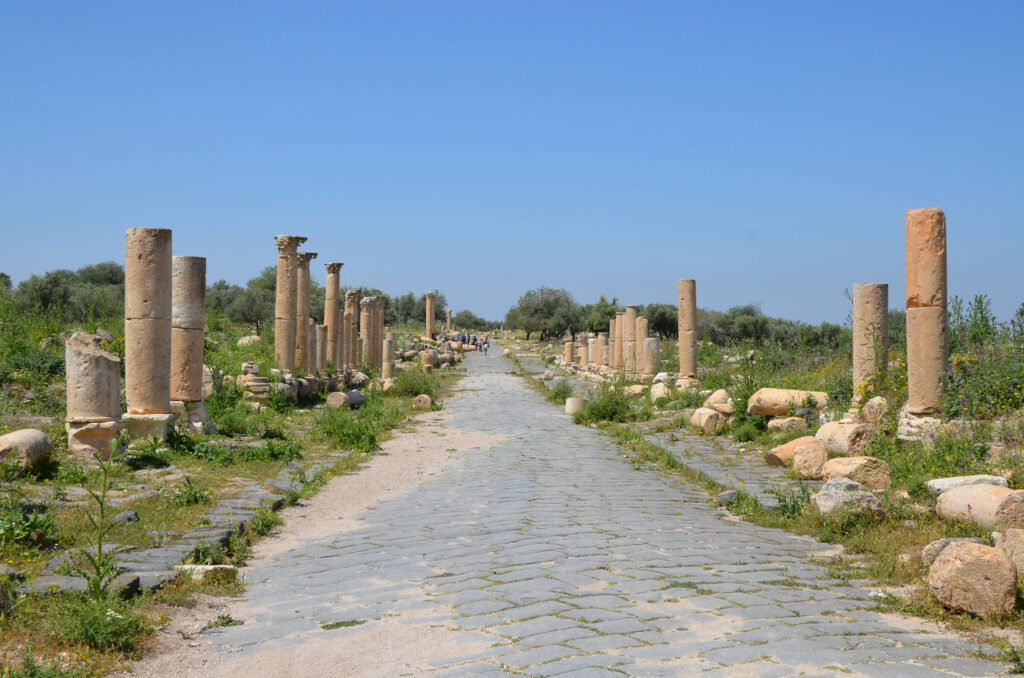
The ruins of Umm Qais is an ancient abandoned city located in Jordan. In ancient times the city was well known as a cultural centre of intellectual life, and was also the birthplace of famous philosophers of the time. Its ruins are made up of ancient theatres with incredible panoramic views, colonnaded streets, a fabulous aqueduct, an underground mausoleum, an impressive city gate, a peculiar basilica and an interesting necropolis. If you visit, you can sit down for brunch at the restaurant high above the ruins, and sample delicious local dishes in the company of the view of the Golan plain and Lake Tiberias.
12. Arch of Hadrian, Jerash
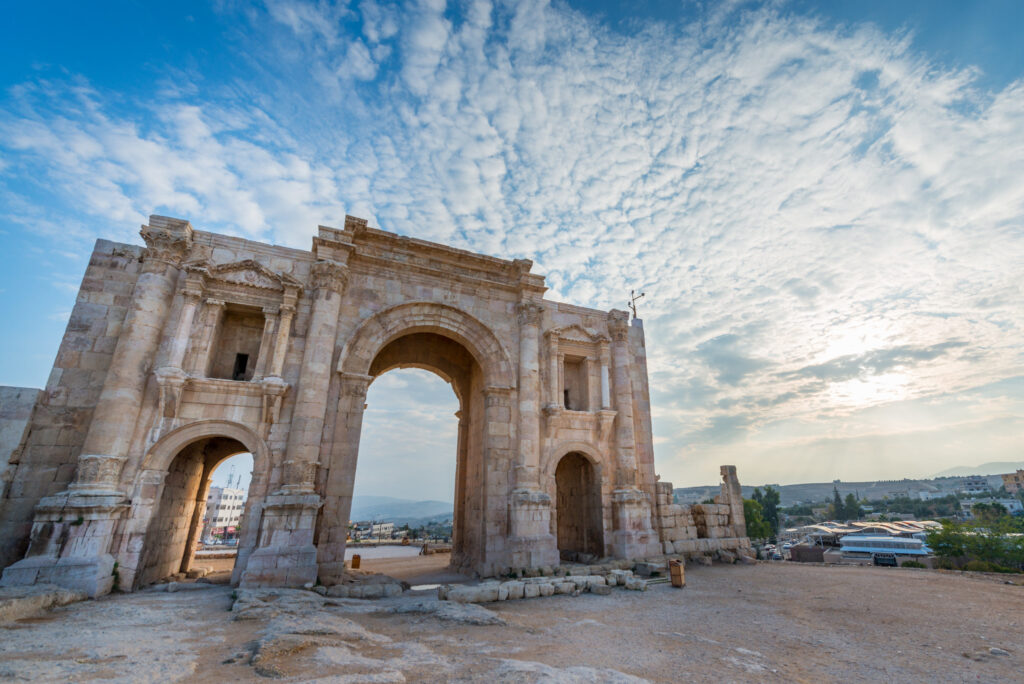
The first thing you will encounter on entering is Hadrian’s Arch. It is undoubtedly the most important building in the precinct of Jerash. When the fascinating city began to gain fame, the emperor decided to pay a brief visit to the city. The huge building has three arches, the largest of which, located in the centre, is now 13 m high, half its height of two millennia ago. It has survived to our time incredibly well preserved, which is quite surprising considering its longevity.
13. Roman Theatre, Amman
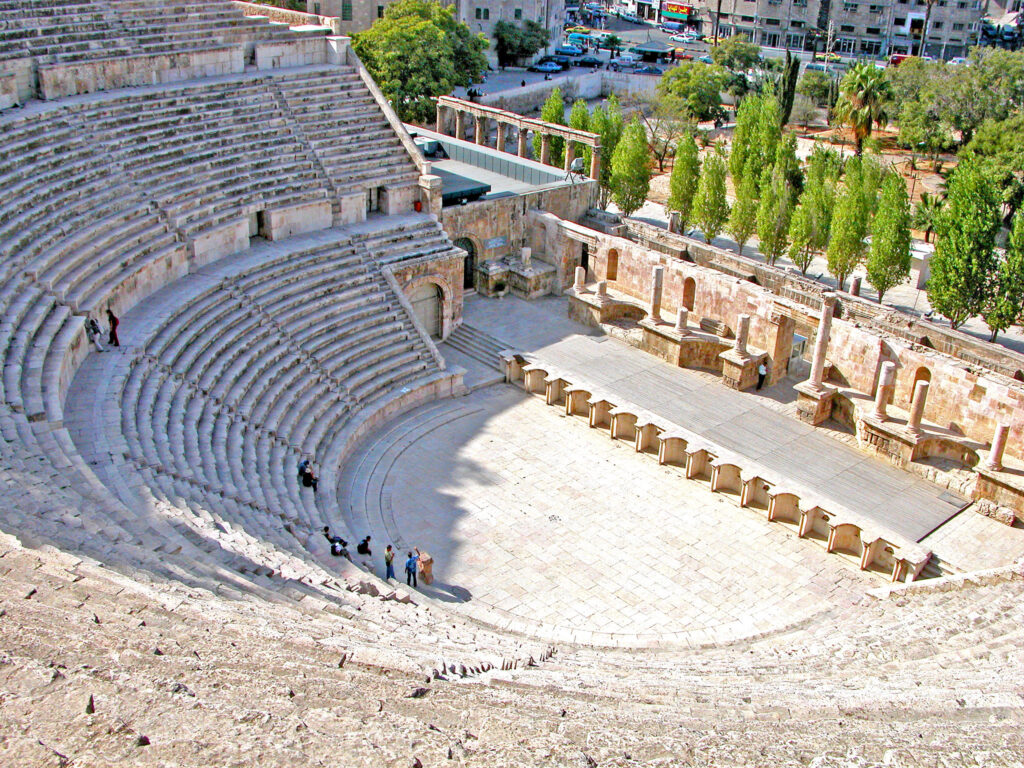
The Roman theatre in Amman is simply enormous. With seating for more than 6000 spectators, it is really well preserved, although there is some recent touching up that is very noticeable in the material and colours used. Climbing it is quite a challenge, knowing that the steps are very worn and excessively steep. Once at the top, the views are very good, both of the theatre itself and of the citadel on the mountain opposite.
14. Ma’in Hot Springs, Ma’in
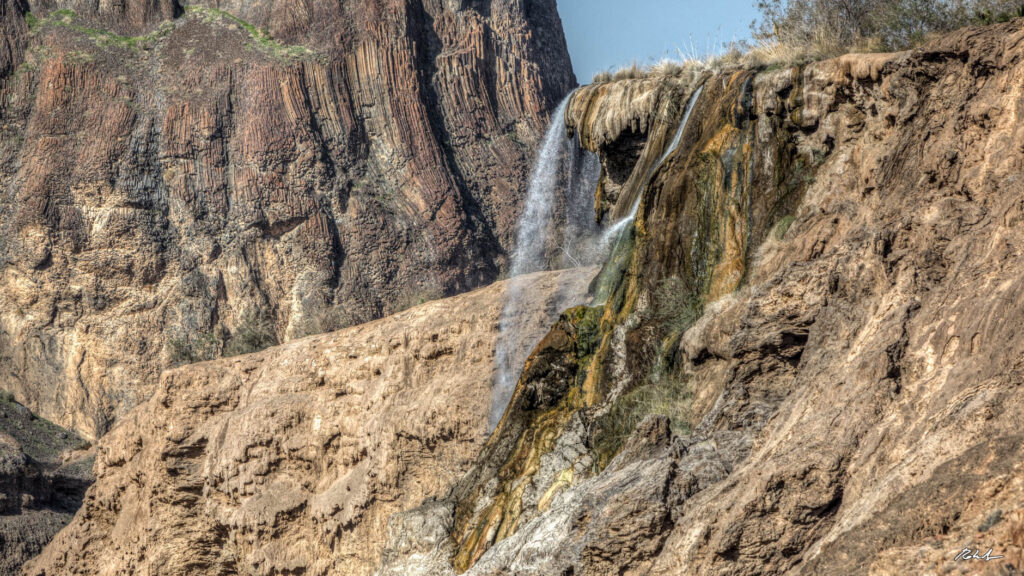
The hot springs are located 264 metres below sea level and form a fabulous oasis, one of the most beautiful in the world. Many Jordanians and foreign tourists come here every year to soak in the hot springs and bathe under the waterfalls, which are the product of winter rains that fall on the highlands of the country and feed the 109 hot and cold springs throughout the valley. The waters are heated by lava fissures in the earth, which heat them up to 63°C (63°F). There are also well-equipped resorts and tourist complexes here.
If you loved this article or found it useful, don’t forget to visit and subscribe to my social media for more useful content. Follow us on Google My Business, YouTube, Instagram, Pinterest, Twitter, Facebook or Reddit and subscribe to our receive our free website content.

